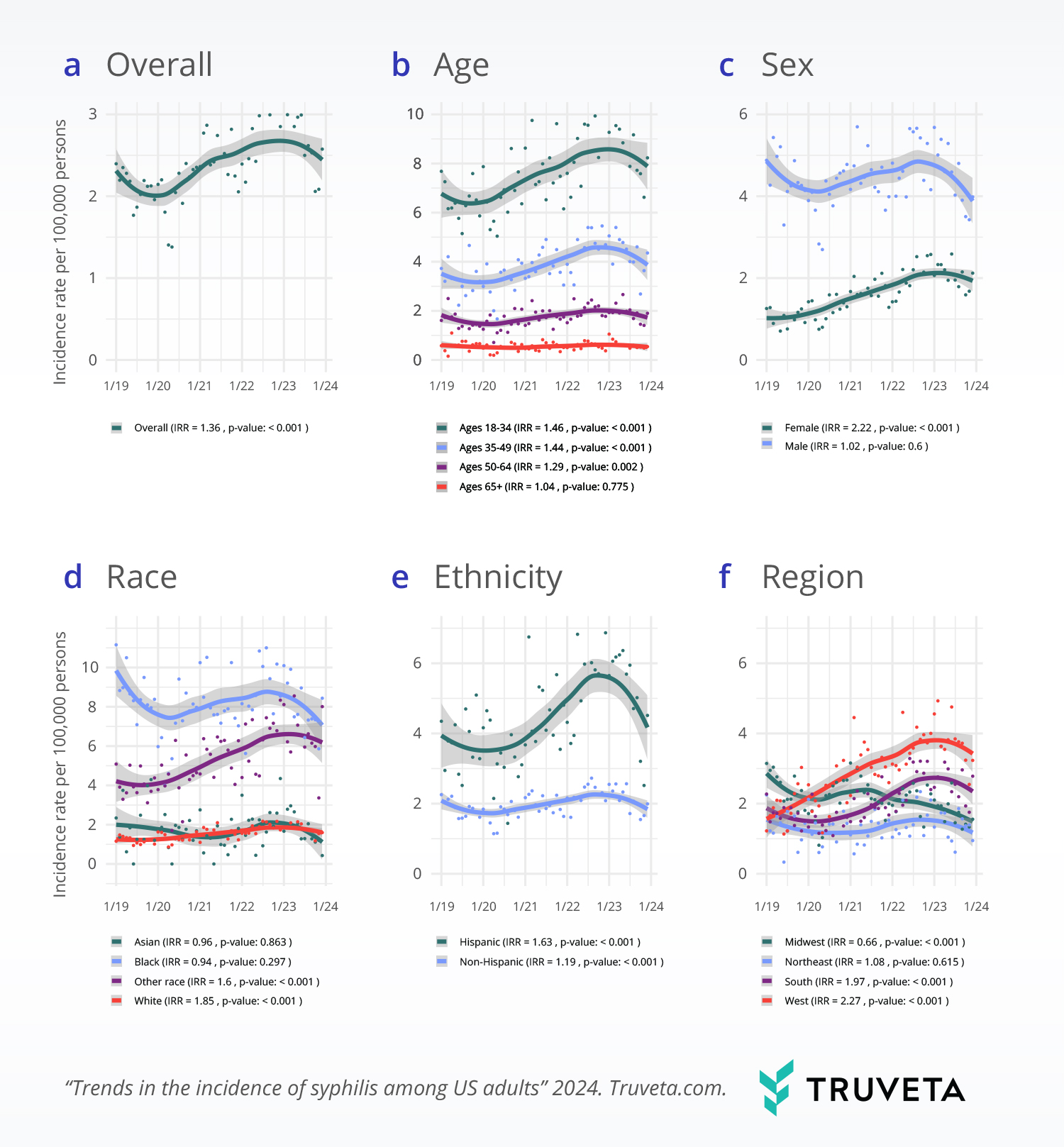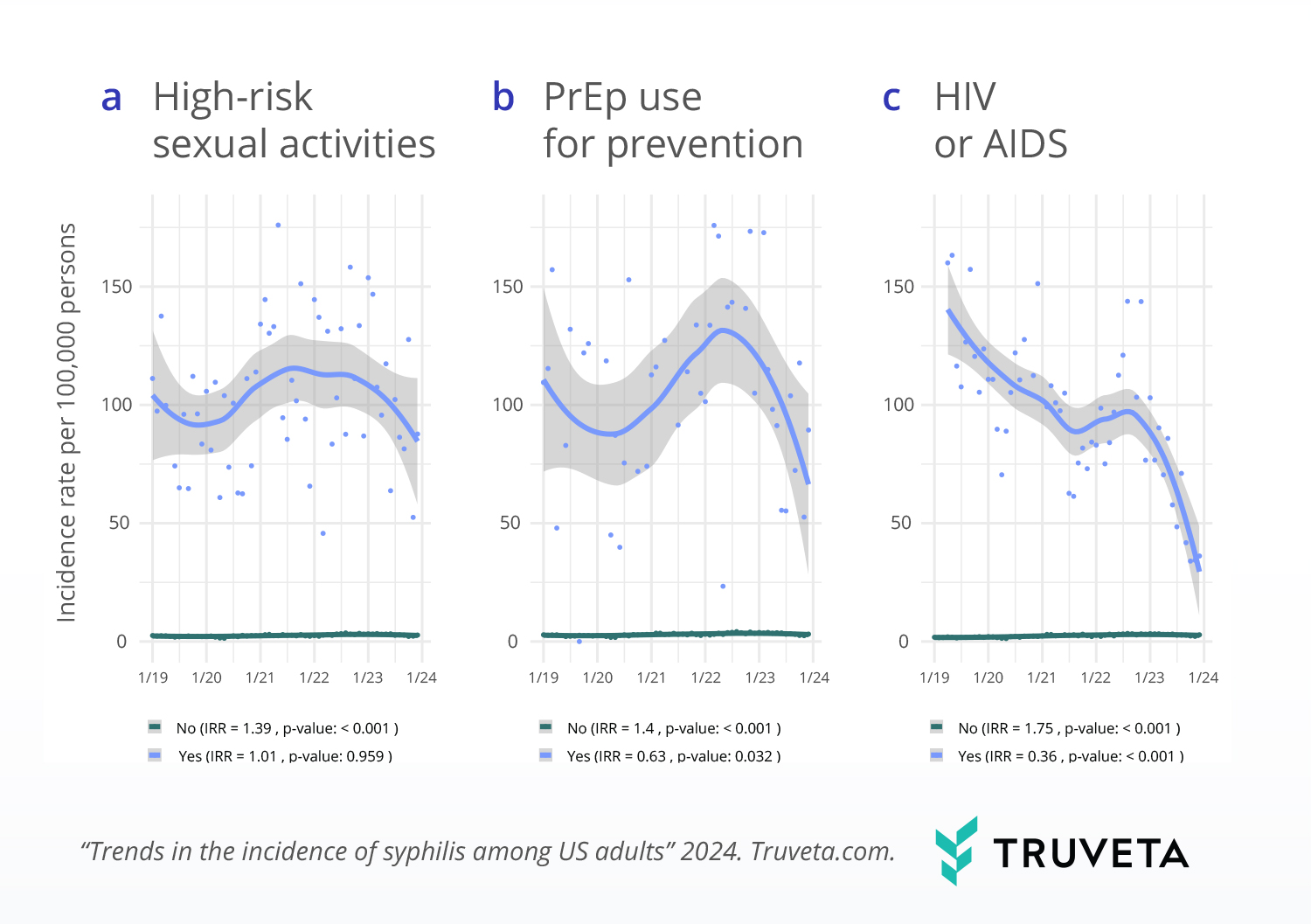- Truveta Research explored the monthly trends in the incidence of syphilis among US adults from January 2019 to December 2023. During the early months of the COVID-19 pandemic, the rate of syphilis incidence (e.g., new infection) increased significantly, reaching a peak in November 2022. By December 2023, syphilis rates returned to pre-pandemic levels.
- The recent decline was primarily driven by individuals commonly considered high-risk for syphilis infection – including men, younger adults, Black and Hispanic individuals, and those with evidence of high-risk sexual activities, Pre-Exposure Prophylaxis (PrEP) use, or HIV/AIDS.
- The study highlights a rise in the incidence of syphilis among groups typically considered low risk, such as women, people of white race, and those without evidence of high-risk sexual behaviors, PrEP use, or HIV/AIDs.
The US Centers for Disease Control (CDC) has suggested that in 2022 the number of cases of syphilis infections reached its highest level since the 1950s, raising concerns about the transmission of this STI and the potential outcomes of untreated infections.
To contribute to public health information about the most recent transmission rates of syphilis, Truveta Research explored the monthly trends in the incidence of syphilis among US adults from January 2019 to December 2023. Below is a summary of the study findings, and the full study – including full demographics, methodology, detailed findings, and more – is available on MedRxiv.
Methods
In addition to capturing basic demographic details about the included population, the study also included syphilis risk factors such as whether a patient engaged in high-risk sexual activities, used PrEP, or had HIV/AIDS within the previous year.
Results
For all age groups, the incidence of syphilis infections increased from 2020 to 2022 then declined in 2023, with younger adults experiencing a higher incidence rate during this time. Overall, from 2019 to 2023 the trend in the rate of syphilis incidence was relatively flat for men, while it increased more than two-fold for women.
When stratifying the population by race, Black individuals had the highest incidence rate of syphilis at any time during the study period, and white and Asian individuals had the lowest. However, when looking at trends in the syphilis incidence over the five-year period, the fastest increase over time was seen in those with white or other races. When stratifying by ethnicity, Hispanic adults had a higher level and increasing trend of syphilis infections compared with non-Hispanic patients, although the rate started to decline in 2023.
Syphilis trends increased rapidly in 2019-2023 for those in the South and West regions of the US, while it declined for those in the Midwest.

The recent decline in 2023 in the incidence of syphilis was primarily driven by individuals commonly considered high-risk for syphilis infection – including men, younger adults, Black and Hispanic individuals, and those with evidence of high-risk sexual activities, PrEP use, or HIV/AIDS.

Truveta Research will continue to monitor these and other public health trends.

